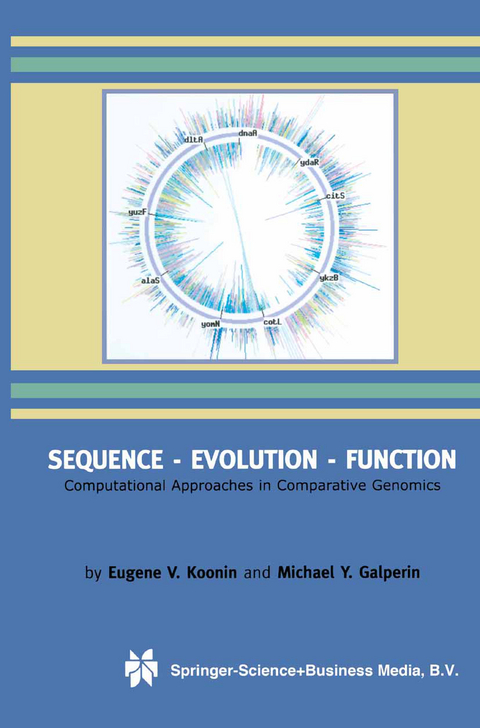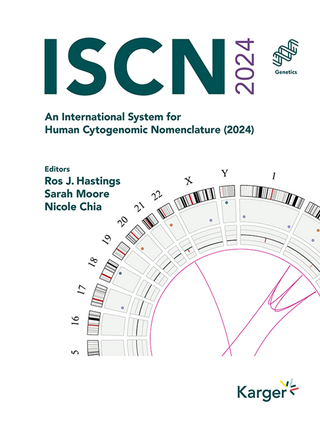
Sequence — Evolution — Function
Computational Approaches in Comparative Genomics
Seiten
2010
|
Softcover reprint of the original 1st ed. 2003
Springer-Verlag New York Inc.
978-1-4419-5321-6 (ISBN)
Springer-Verlag New York Inc.
978-1-4419-5321-6 (ISBN)
Sequence - Evolution - Function is an introduction to the computational approaches that play a critical role in the emerging new branch of biology known as functional genomics. The book provides the reader with an understanding of the principles and approaches of functional genomics and of the potential and limitations of computational and experimental approaches to genome analysis.
Sequence - Evolution - Function should help bridge the "digital divide" between biologists and computer scientists, allowing biologists to better grasp the peculiarities of the emerging field of Genome Biology and to learn how to benefit from the enormous amount of sequence data available in the public databases. The book is non-technical with respect to the computer methods for genome analysis and discusses these methods from the user's viewpoint, without addressing mathematical and algorithmic details. Prior practical familiarity with the basic methods for sequence analysis is a major advantage, but a reader without such experience will be able to use the book as an introduction to these methods. This book is perfect for introductory level courses in computational methods for comparative and functional genomics.
Sequence - Evolution - Function should help bridge the "digital divide" between biologists and computer scientists, allowing biologists to better grasp the peculiarities of the emerging field of Genome Biology and to learn how to benefit from the enormous amount of sequence data available in the public databases. The book is non-technical with respect to the computer methods for genome analysis and discusses these methods from the user's viewpoint, without addressing mathematical and algorithmic details. Prior practical familiarity with the basic methods for sequence analysis is a major advantage, but a reader without such experience will be able to use the book as an introduction to these methods. This book is perfect for introductory level courses in computational methods for comparative and functional genomics.
Personal Interludes.- 1. Genomes from Phage to Human.- 2. The Evolutionary Concept in Genetics and Genomics.- 3. Information Sources for Genomics.- 4. Principles and Methods of Sequence Analysis.- 5. Genome Annotation and Analysis.- 6. Comparative Genomics and New Evolutionary Biology.- 7. Evolution of Central Metabolic Pathways: The Playground of Non-orthologous Gene Displacement.- 8. Genomes and the Protein Universe.- 9. Epilogue: Peering through the crystal ball.- Appendices.- 1. Glossary.- 2. Useful WWW sites.- Databases.- Major genome sequencing centers.- 3. Problems.- References.
| Erscheint lt. Verlag | 1.12.2010 |
|---|---|
| Zusatzinfo | XIV, 462 p. |
| Verlagsort | New York, NY |
| Sprache | englisch |
| Maße | 155 x 235 mm |
| Themenwelt | Studium ► 2. Studienabschnitt (Klinik) ► Humangenetik |
| Naturwissenschaften ► Biologie ► Biochemie | |
| Naturwissenschaften ► Biologie ► Evolution | |
| Naturwissenschaften ► Biologie ► Mikrobiologie / Immunologie | |
| Naturwissenschaften ► Biologie ► Zoologie | |
| ISBN-10 | 1-4419-5321-3 / 1441953213 |
| ISBN-13 | 978-1-4419-5321-6 / 9781441953216 |
| Zustand | Neuware |
| Informationen gemäß Produktsicherheitsverordnung (GPSR) | |
| Haben Sie eine Frage zum Produkt? |
Mehr entdecken
aus dem Bereich
aus dem Bereich
An International System for Human Cytogenomic Nomenclature (2024)
Buch | Hardcover (2024)
Karger (Verlag)
117,70 €
Eine sehr persönliche Geschichte | Der New York Times-Bestseller
Buch | Softcover (2023)
Ullstein Taschenbuch Verlag
21,99 €
Die revolutionäre Medizin von morgen (Lifespan)
Buch | Softcover (2020)
DuMont Buchverlag
16,00 €


